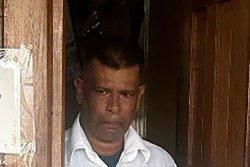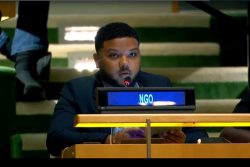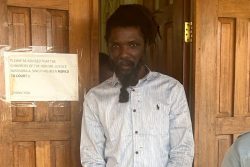Recently, readers were informed through a Stabroek News editorial (1/23/2025) about the Ministry of Culture, Youth and Sport’s plan to host, for the second time, a Jamaican artform, dancehall, competition as part of Guyana’s 2025 Mashramani celebration. According to the editorial, and as attributed to the Ministry, last year this category was considered extremely popular among patrons, hence its inclusion again in 2025. However, readers of the editorial may not have been thrilled to learn that Guyana was attempting to do what no other country, not even Jamaica—the birthplace of dancehall—has done – host a national dancehall competition. A curious contrast emerges when we consider the recent Grammy Awards, where three of the four nominated entries were classified as dancehall, but all fell under the broader reggae category, highlighting an international understanding of cultural integrity that appears absent in Guyana’s cultural policymaking.
Departing from the editorial while building on fundamental themes of cultural misappropriation, neglect of our own musical heritage, and a policy of shortsightedness from the Ministry of Culture, one must question why our government continues to overlook its indigenous musical forms. Over the years, we have integrated external genres such as Calypso, Soca, and, more recently, Chutney into our national celebrations. While an exception can be made for Calypso, given Guyana’s historical contribution to the genre (remembering that the Mighty Sparrow refined his craft here), and the early 1970s collaboration between Guyanese and Trinidadian songwriters and producers, we are yet to establish a formalized recognition of our own distinct musical identity. Meanwhile, Trinidad and Tobago has successfully claimed Soca and Chut-ney, solidifying their cultural brand on the global stage.
If the question arises as to why Guyana has not prioritized its indigenous musical traditions, the answer lies in decades of governmental neglect and disinvestment in the cultural sector. Successive administrations, with the notable exception of Forbes Burnham’s government, have failed to substantially support local artists, provide sustainable cultural infrastructure, or ensure that musicians can earn a viable livelihood from their craft. This lack of investment has stunted the growth of Guyana’s creative industry, contrasting sharply with other Caribbean nations that have actively cultivated and promoted their artistic talents through national and regional competitions.
Further, it is worth recalling that in 2007, the European Union and CARIFORUM organized a conference in Barbados to prepare the Caribbean for the shift away from preferential sugar pricing towards creative industry development. Guyana was invited to this conference but declined the invitation. Since then, Caribbean nations have outpaced Guyana—prior to its oil economy—both in terms of artistic production and GDP contributions from the creative sector. This historical decision underscores the persistent undervaluation of the arts in our national development planning. The real crisis, however, lies in the continued disregard for our cultural creatives, knowledge bearers, and performers, whose contributions remain largely unrecognized and unsupported.
Beyond policy failures, there is a deeper cultural disconnect at play. Guyana’s cultural identity is rich and multifaceted, shaped by the traditions of its Indigenous, African, Indian, European, and Chinese communities. Yet, instead of fostering and promoting these unique expressions, the country has defaulted to adopting external cultural forms without creating a balance that also amplifies its own heritage. This oversight is particularly glaring in a time when global audiences are increasingly drawn to authenticity and localized artistic expressions. By failing to document, archive, and promote our musical traditions—whether Indigenous songs, folk music, or emerging contemporary styles—we risk erasing our cultural footprint in favour of imported trends.
To rectify this, a robust national cultural policy must be implemented—one that actively funds and promotes local artists, creates performance spaces, and integrates indigenous and traditional music into national celebrations. Initiatives such as a national folk festivals, music conservatories, or grants for young musicians could serve as catalysts for a reawakening of Guyanese musical cultural pride and heritage. Furthermore, collaborations with regional and international bodies, quite similar to trade missions, could provide platforms for local artists to gain visibility beyond our national borders. Without deliberate action, we will continue to consume rather than contribute to the global cultural marketplace.
Ultimately, culture is more than entertainment—it is an economic driver, a unifying force, and a reflection of national identity. If Guyana aspires to be a leader in cultural preservation and artistic innovation, it must first recognize, invest in, and celebrate the wealth of talent that resides within its own borders. Only then will our distinct cultural and musical heritage be recognised and valued within our national boundaries, the Caribbean and beyond.








